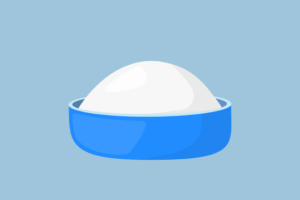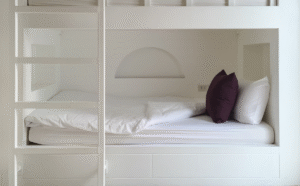When Can Infants Self-Soothe – The Sleep Girl

Each child is exclusive, and whereas science offers us useful developments, it’s necessary to observe your child’s particular person cues and readiness. Let’s take a more in-depth take a look at what the analysis tells us—and the way it aligns with what I’ve seen in over 25 years of supporting households with mild sleep teaching.
- Between 4–12 months, with development over time, however not all infants comply with the identical path
- Self-soothing begins for some infants between 4 to six months and will increase by 12 months, however with massive particular person variability. For a lot of households, this overlaps with the 4-month sleep regression, a interval when sleep patterns shift and new self-soothing abilities could begin to emerge
Analysis by Goodlin‐Jones et al. (2001) confirmed that self-soothing develops progressively throughout the primary yr:
- At 3 months: Solely about 17% of infants had been self-soothers.
- At 6–9 months: Round 61% had been in a position to self-soothe.
- At 12 months: Simply 50% had been self-soothers—which means half of all one-year-olds nonetheless wanted parental assist to fall again asleep.
That is such an necessary level. Many dad and mom really feel discouraged if their 6-, 9-, and even 12-month-old isn’t sleeping independently but. However this research confirms what I educate every single day: studying to self-soothe is a course of, and it’s fully regular for some infants to wish extra time and help.
How Infants Self-Soothe / What It Seems to be Like
In keeping with Burnham et al. (2002), self-soothing implies that a child is ready to calm themselves both at bedtime or after an evening waking, while not having a dad or mum to intervene.
This could appear to be:
- Thumb sucking
- Gently rocking or rubbing a consolation merchandise
- Sucking on a pacifier
- Quiet fussing adopted by resettling
These are small however highly effective indicators that your child is growing the flexibility to control themselves—and it’s one thing we are able to help by mild, constant routines.
Educating or Serving to Child Self-Soothe
Completely—however not by forcing it. The identical research (Burnham et al., 2002) discovered that placing infants down drowsy however awake was related to elevated self-soothing. That’s the precise strategy I educate in The Sleep Girl Shuffle. My technique for mild sleep coaching.
If you constantly put your child down earlier than they’re absolutely asleep, you’re giving them the chance to follow this ability—whereas nonetheless being lovingly current and responsive. Over time, they start to know, “I understand how to go to sleep by myself.” That’s a ability that lasts a lifetime.
Sleep Aids & Self-Soothing
Goodlin‐Jones et al. (2001) additionally discovered that self-soothers had been extra possible to make use of a sleep support—like a pacifier, thumb, or lovey. I speak about this usually: loveys and different secure consolation objects could be highly effective instruments in serving to your little one really feel safe and soothed at evening.
In fact, secure sleep tips all the time come first. However as soon as your child is sufficiently old (sometimes round 6 months), introducing a comfortable, breathable consolation merchandise—paired together with your mild help—could make a giant distinction.
Why Self-Soothing Issues
Self-soothing isn’t nearly longer stretches of sleep (although that’s a welcome bonus!). Burnham et al. (2002) discovered that infants who self-soothed had:
- Fewer evening wakings
- Longer, extra consolidated sleep
- More healthy sleep-wake patterns
That’s the long-term objective of mild sleep teaching: not simply “getting by the evening,” however serving to your little one construct wholesome sleep habits for the long run.
A Last Phrase from Kim
I wish to reassure you: in case your child isn’t self-soothing but, they’re not behind. These abilities develop progressively, and each little one is completely different. In case your child is between 4 and 12 months, this can be a nice time to softly introduce routines that encourage self-soothing—like constant bedtime rhythms, drowsy-but-awake placements, and age-appropriate sleep schedules.
And keep in mind, it’s not about perfection—it’s about progress, one small step at a time.
You’ve received this. And when you need assistance alongside the way in which, I’m right here.
Citations
Burnham, M., Goodlin‐Jones, B., Gaylor, E., & Anders, T. (2002). Nighttime sleep-wake patterns and self-soothing from beginning to at least one yr of age: a longitudinal intervention research.. Journal of kid psychology and psychiatry, and allied disciplines, 43 6, 713-25 . https://doi.org/10.1111/1469-7610.00076.
Goodlin‐Jones, B., Burnham, M., Gaylor, E., & Anders, T. (2001). Evening waking, sleep-wake group, and self-soothing within the first yr of life.. Journal of developmental and behavioral pediatrics : JDBP, 22 4, 226-33 . https://doi.org/10.1097/00004703-200108000-00003.






